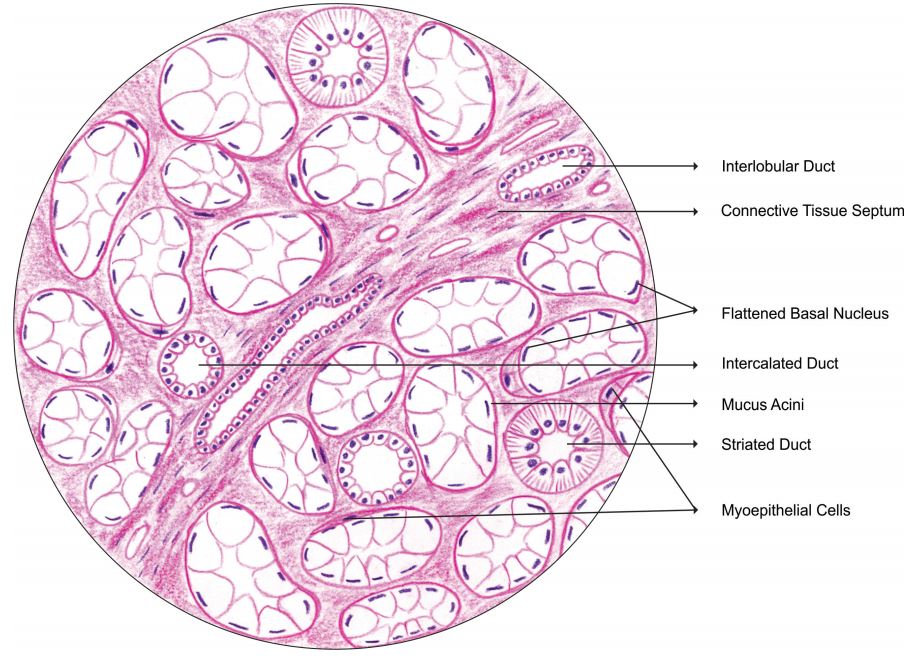Glandula Salivariae (Salivary gland)
The salivary glands in mammals are exocrine glands that produce saliva through a system of ducts. Humans have three paired major salivary glands (parotid, submandibular, and sublingual), as well as hundreds of minor salivary glands. Salivary glands can be classified as serous, mucous or seromucous (mixed).
In serous secretions, the main type of protein secreted is alpha-amylase, an enzyme that breaks down starch into maltose and glucose, whereas in mucous secretions the main protein secreted is mucin, which acts as a lubricant.
In humans, between 0.5 and 1.5 litres of saliva are produced every day. The secretion of saliva (salivation) is mediated by parasympathetic stimulation; acetylcholine is the active neurotransmitter and binds to muscarinic receptors in the glands, leading to increased salivation
- Major salivary glands
-
- Superficial part
- Deep part
- Accessory parotid gland
- Parotid duct
-
- Major sublingual duct
- Minor sublingual ducts
-
- Submandibular duct
-
- Minor salivary glands
- Labial glands
- Buccal glands
- Molar glands
- Palatine glands
- Lingual glands
| GLANDULAE ORIS | GLANDS OF MOUTH | |
| Glandulae salivariae majores | Major salivary glands | |
| Glandula parotidea | Parotid gland | |
| Pars superficialis | Superficial part | |
| Pars profunda | Deep part | |
| Glandula parotidea accessoria | Accessory parotid gland | |
| Ductus parotideus | Parotid duct | |
| Glandula sublingualis | Sublingual gland | |
| Ductus sublingualis major | Major sublingual duct | |
| Ductus sublinguales minores | Minor sublingual ducts | |
| Glandula submandibularis | Submandibular gland | |
| Ductus submandibularis | Submandibular duct | |
| Glandulae salivariae minores | Minor salivary glands | |
| Glandulae labiales | Labial glands | |
| Glandulae buccales | Buccal glands | |
| Glandulae molares | Molar glands | |
| Glandulae palatinae | Palatine glands | |
| Glandulae linguales | Lingual glands |





Discussion